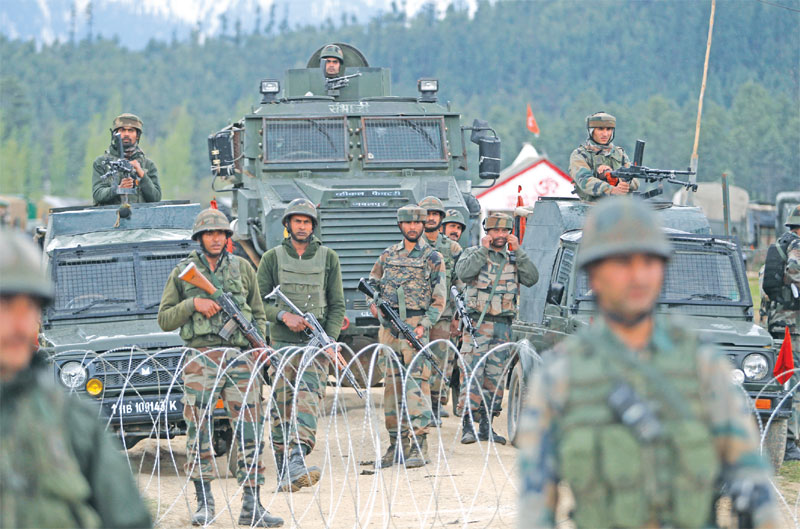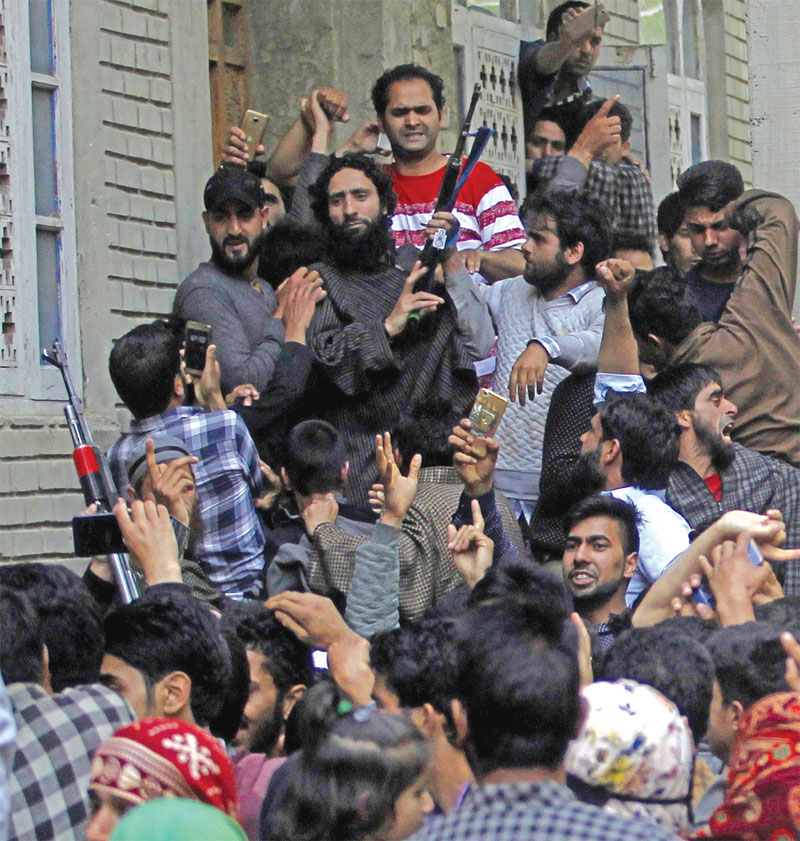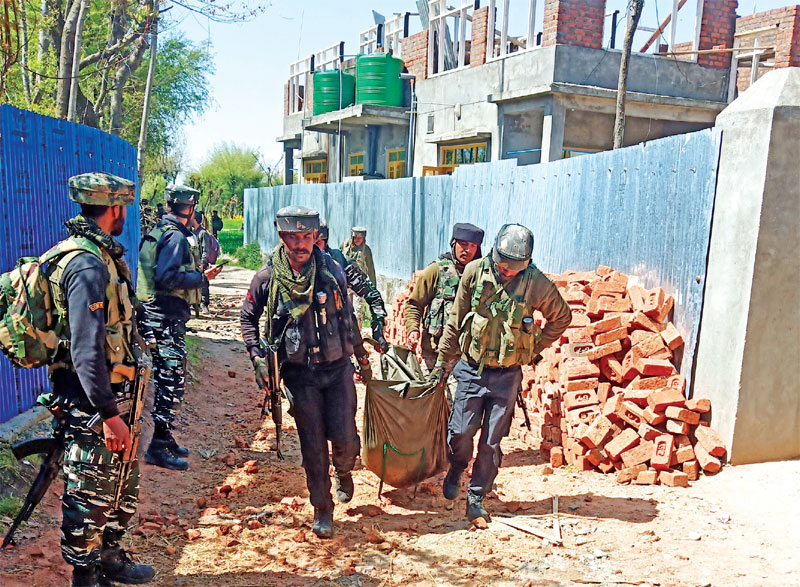With this month, FORCE starts bimonthly series on counter-insurgency operations in India
 Brig. Ravi Palsokar (retd)
Brig. Ravi Palsokar (retd)
The decision to commit troops to counter insurgency in any part of the country should presumably be a difficult one, arrived at after much deliberation and after all other options have failed. However, our experience shows that not enough attention is paid to all the facets of such a decision, and the use of the army ostensibly in aid of civil authority is done as a matter of course. That the senior military leadership succumbs to such request is another matter altogether. Such decisions can lead to prolonged unrest and much hardship to the local population and in extreme cases, worsen the situation.
‘What are we doing here?’ was the question asked repeatedly in initial stages of Indian Peace Keeping Force (IPKF) deployment. Each one of us who directly commanded troops handled such a query in his own way. After some initial irritation, I developed a stock answer that we had not joined the army only to march down Raj Path on Republic Day; and if our government had given us a task that seemed outright stupid, well we had no choice but to carry it out to the best of our ability, trusting our superiors to make sense of what was actually happening on the ground.
Note two points, one that it was obvious to the most dim-witted person in the IPKF that we were in a lose-lose situation and two, that my irritation stemmed from the fact that I agreed with the question except that as a front-line brigade commander, I did not have the latitude to think about this question without sapping my own resolve. Fact is we had no business in involving ourselves in the political and military situation in Sri Lanka and that is why I was moved to title my Sri Lanka memoir as, ‘Ours Not to Reason Why’.
The decision to deploy troops must emerge from carefully thought considerations, war-gaming the situation and other tactical as well as administrative matters. Such a decision should also consider what is the end result sought and an exit strategy, and the uncontrollable outcomes that can occur.
This article discusses the factors governing decision-making to commit troops, whether within the country or, as in the case of the IPKF, outside. The role of decision makers to include political, military and bureaucratic leadership and whether parliamentary sanction and oversight is needed. The discussion also includes the consideration of strategic, operational and tactical aims and the manner of implementing them. There is the necessity of legal sanction and cover and also the urgent need of a clear-cut policy directive.

Strategic Aims and Considerations
The army lays much stress on selection and maintenance of the aim as the master principle of war. This assumes even greater importance in an amorphous situation such as counter-insurgency tasks. It is the experience in our country that the political executive is only too content to pass the responsibility to the army and then let them deal with the situation as they deem fit. It is convenient for everyone to convert an essentially political and administrative problem to one of security or law and order.
Analyse what is the end result sought, is it the restoration of the political process or create conditions for restoration of civil administration or is it to brow beat the local population to conform to the status quo ante? Returning to the main question, what is required to be achieved? In the absence of a clear directive, the army does what it is best at—eliminate the insurgents by using all the force at its disposal with little regard to the long-term damage. This is one of the reasons for the smouldering insurgency in the north-eastern part of our country since the late 1950s and the insolubility of the Kashmir problem.
Senior officers of the army who have been long involved in such operations will readily admit that there has never been a clear-cut political directive. A different problem presented itself when the IPKF was sent to Sri Lanka. To date we do not know what political directive was given to the army and the other two services, neither do we know what orders or instructions were given to the IPKF commander as the troops were being inducted. Were any instructions given in writing at all so that the person who gave the order could subsequently be held to account? We do not know.
Unfortunately, the army is still shedding blood in both the Northeast and in Kashmir not counting the cost to the civil population whose grievances seem to hold the last priority. We need to go back to the drawing board. The armed forces and particularly the army are not blameless. We have yet to come across any army senior commander who has taken exception to the task given in counter-insurgency or out of area operations such as in Sri Lanka.
Unambiguous Policy Directive
Ask any senior army officer who has led counter-insurgency operations in the Northeast or in Kashmir and he will be at pains to point out that he did not, ever, receive a policy directive. The same malaise applied to the country’s only overseasforay of deploying the IPKF in Sri Lanka.
The following is a direct quote from a former successful (and popular with the locals) corps commander in Kashmir (name withheld on request). In a communication to the author, he writes that,
“To begin with, there is the old failing of not monitoring a developing situation with a view to anticipating the possibility of the Army’s deployment. This probably did not apply when the Army was deployed in CI ops in the NE for the very first time. In the case of Kashmir and in Sri Lanka, however, rushing the Army in was certainly a knee-jerk reaction. If the Army had been silently preparing for a ‘what if’ kind of possibility, it would have gone in better prepared…
Next is the lack of a clear political directive. The political leadership is certainly not incapable of issuing one. Over the years an attitude appears to have developed where neither the political leadership feels that it is its essential charter not do the armed forces insist on receiving an unambiguous directive from which to ‘select and maintain an aim’—the very first principle of war. Such apathy and chalta hai attitude appear to have come to stay. The bureaucrats, who would otherwise raise many whys and wherefores on what the armed forces do, also choose to remain silent whereas they should be the ones to advise the government to do the right thing…
My last point is about either not having entry and exit strategies or worse, having them only to be neglected in implementation. After summoning the Armed Forces in a crisis situation, they should be pulled out when the status quo ante is restored or the situation conforms to that as specified in the exit policy. Since the Army, in particular, does a fine job of restoring order (in aid to civil authority), the politicians and the civil services including the police, appear quite happy to maintain the status quo; leaving the onus of maintaining order on the Army while taking the credit for bringing ‘normalcy’. If things turn sour as they occasionally do, there is the Army holding the can marked ‘AFSPA’ to be conveniently blamed for high-handedness!”
Any decision to go to war or to use armed force in counter-insurgency must set out in the beginning, the following: Aim, Intention, rough Time Period, Resources and Outcome so that an Exit Strategy can be considered. It is obvious that most of these factors can hardly follow a rigid schedule of any type, but the point is that just by considering them, however incompletely, they are not overlooked.
It is one thing to decide that use of armed force is necessary, but it also requires oversight. In a democracy, this oversight is provided by the political leadership, but then what about oversight of the performance or decisions of the political leaders? Again, in a democracy, this oversight should be done by the Parliament. The United States has a War Powers Act which says that while expediency may require immediate deployment of troops, the government has to go back to the Senate in three months’ time to take sanction of the elected representatives. Admittedly, this rule is unfortunately observed mainly in the breach, but a legally acceptable provision does exist and the decision makers can be held accountable.

Strategy, Operational Art and Tactics
Start with the difference between these terms. For a lay person strategy and tactics are a continuum of the same thing. The conception of a nation’s strategy is multi-faceted and also multi-level. What this means is that each element of national power such as geographic location, political aims, diplomatic initiatives, economic advancement and above all military power and others, need to develop their own strategy and this has to synthesize into a whole which is national strategy. The trouble is that many of these are in conflict with each other over their aims and are competing for the same scarce resources. It requires strong political leadership and the executive to back it up, to make it succeed.
Similarly, operational art is the method of putting strategy into practice and tactics, the manner in which it is actually executed. It may sound simple, but the devil is in the details. The point which needs emphasis is that there is a hierarchy at work here, particularly in military strategy. For example, a power which is tactically strong but has a faulty strategy will always lose to the power which has a sound strategy but may be weak tactically on the ground. The Americans claimed in Vietnam that they never lost a battle, indeed true, but they lost the war, because of faulty strategic aims. India suffered from the same when we deployed the IPKF against the LTTE. Everyone on the Island knew that we were in Sri Lanka for a limited period of time and by just remaining in existence, the LTTE emerged stronger, and we were powerless (and maybe did not want to) to annihilate them.

The AFSPA Debate
It is a truism that the armed forces who wield the power of the state and cause death and destruction in the service of the country need official sanction to do so. This is provided for in the Constitution of India and provides soldiers (in the generic sense) with legal sanction to do so and the state then provides them protection from the laws of the country.
This privilege is not unfettered freedom because the executive government tasks the armed forces to exercise such power. In allowing them to do so, the state also denies certain privileges such as formation of trade unions or communicating with the press and so on. Consider it as a social contract between the soldier and the state. This can cause friction in countries where the rule of law is not strong for a variety of reasons. Fortunately for us in India this aspect has not troubled us, but we need to note that the right to use arms is under strict and constant supervision, though it may not appear so to the common populace. However, the concern here is that this protection is even more important when soldiers are required to use force against their own people.
The Armed Forces Special Powers Act (AFSPA) is devised to provide this specific protection. It gives unrestricted power to those deployed for tasks such as counter-insurgency and also provides them with legal protection. This is the contentious issue. The Armed Forces Special Powers Act (AFSPA), which has been in force in one part of country or another since 1958, has been increasingly coming under fire. Every few months and particularly after incidents which involve the loss of lives, there is a call for abolition of AFSPA. The government is aware of the problem and has successively reduced the areas where the Act is in force. Presently, it is restricted to only certain districts of the north-eastern states, but even there, it is contentious.
It is time we seriously consider the utility of the Act. There is merit in the argument that AFSPA has outlived its utility and must go.
It is worth recalling that while AFSPA was introduced in 1958, the Assam Disturbed Areas Act was enacted in 1955 to provide a legal framework for security forces to deal with the Naga insurgency. When the army was inducted soon thereafter, the then army chief in a Special Order of the Day exhorted his troops, “…you are not to fight the people of the area but to protect them (from disruptive elements) …you must therefore do everything possible to win their confidence and respect…”. It is a sad commentary that more than 60 years later AFSPA still remains in force in parts of the Northeast and the clamour for its revocation has also come from events in Kashmir where it was imposed in 1990. It is sadder still that despite untold sacrifices the Army seems to have lost the ‘confidence and respect’ of the people. If that is the case, then it is time for AFSPA to go. If the Act is revoked, how it will affect the security of the country?
First the basics. Every Indian will agree that there can be no compromise on the territorial integrity of the country. It is the Constitution that provides that India will be a Union of States (Art. 1) and it has no provision to cede territory (Sub-clause 3). So, any demand for separation is to be resisted. Look now at the security aspects. Our executive machinery at the district level has always had the authority to use force, requisitioning troops, if necessary, to restore law and order. Whenever the armed forces operate, they are acting in aid of civil authority. It follows that once the situation is brought under control, the civil administration re-assumes responsibility. If the government machinery in Kashmir is prepared to assume responsibility, the Army would only be happy to go back to their task of protecting the borders of the country.
Is a via media possible? Yes, use AFSPA in selected areas and for restricted periods of time. For example, certain areas along the LOC could have AFSPA permanently in force. In other areas let the police (with army in support) seek and impose AFSPA for a limited period of time.
There are four aspects to the imposition and implementation of AFSPA: a) Government i.e., politicians and bureaucrats; b) Military, particularly those who have field experience; c) the Moral dimension and last, d) Practicality.
Government Approach
By imposing AFSPA, the civil administration sheds its responsibility of governance to the actions of the military and thereby washes its hands off except to criticize when expedient. The civil administration uses the army as a shield to hide behind and the earlier they take on the responsibility for governance including law and order, the better.
This does not mean that AFSPA is revoked completely. It means that while it may be withdrawn from areas where and when necessary, it remains on the Statute books. I have said that the area contiguous to the LoC and the International Border must always have AFSPA in force. Let the Army decide where all it wants the Act; but it should not be a blanket imposition.

The Military Dimension
My greatest criticism is reserved for the military approach. The Northeast simmers but look at the disproportionate numbers of troops deployed for counter-insurgency in various areas as if they are all similar. Kashmir has been different with the entry of foreign militants who brought in savagery unseen till then. Admittedly AFSPA served its purpose when required and the sacrifice of the lives of our jawans and citizens, have brought about the present conditions when violence has been brought down to manageable levels. The situation in the 1990’s and early 2000’s and today is totally different.
Every incident, small or big, brings publicity both welcome and unwelcome on AFSPA. One different example. Just before leaving the Army, as Brigadier in charge of Administration of a Corps in the NE it was my task to handle the legal cases arising out of AFSPA filed against our jawans and officers. There were about 220 of them and except for two or three, they were all bogus. But by delaying the correct action, we were giving credence to all of them.
This has ignored as also nullified all the good work done by officers and jawans over the last many decades. There are numerous inspiring stories. Few know of a Commanding Officer’s wife in Kashmir who went and stayed unaccompanied with the villagers and won over the women and their families. She deserves a medal and the nation’s gratitude. Even in retirement, Lt. Gen. Ata Hasnain who commanded the Corps deployed in Kashmir Valley, uses the tag line ‘I love Kashmir’ with his email ID. There is the Guards officer who when seriously injured in an encounter in the Northeast insisted that two injured children be evacuated before him, earning the village’s undying gratitude. Now he has adopted the village and the village has adopted him.
The situation we have today is due to such dedication and sensitivity. And our emphasis is on kills and weapon recoveries. The Indian officer and jawan can be trusted much more than we do at present.

The Moral Dimension
India has been spared a civil war after Independence. Countries that have suffered such a war still carry those scars. Closer to home, Pakistan still uses the FCR (Frontier Crimes Regulation) Act of 1877 for FATA and see the mess they are in. According to FCR, ‘the Parliament of Pakistan can play no role in the affairs of FATA’ (Wikipedia). None of these are examples we want to follow.
The Practical Aspect
In times of instant news and the wide reach of social media, the army has to take into account the fact that they are under constant scrutiny. But this can also be used with effect by the army to buttress its actions. The hard work has been done; it is time the civil administration took up its responsibilities.
In Summary
Counter-insurgency is not an easy task for soldiers. The enemy are usually one’s own citizens who may be considered misguided but have been driven to taking up arms against their own government. Thus, any commitment of troops has to be carefully considered. This presupposes that the government has exhausted its own responses and have no other choice but to call in the army.
As we have seen, experience shows that more often than not, decision to commit troops is taken for political expediency and abetted by senior leadership of the army without due consideration of aims, methodology, desired results and an exit strategy. Over a period of time, the army’s operations themselves become a cause for furthering the insurgency because of perceived excesses and the fact that it is convenient to let someone take responsibility.
Matters are compounded when troops are committed abroad. The IPKF is a ready example for India, though but recognize that other countries have also led themselves into similar quagmires before.
This discussion emphasizes one imperative. Strong political leadership is required to control the progress of counter-insurgency operations which will never progress smoothly and a coordinated effort is required between all branches of the executive, including the armed forces to steer operations and their aftermath. The clinching lesson is that counter-insurgencies are solved by politics and not by force.

